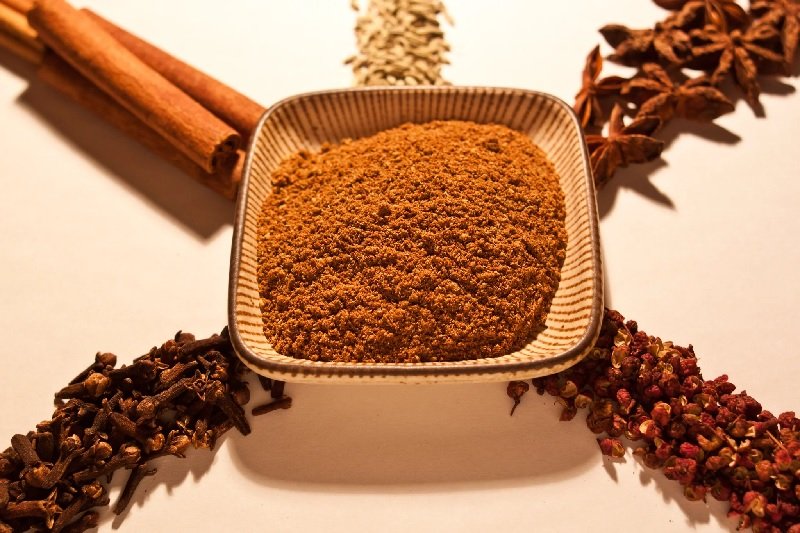Asian spice has come to be the soul of culinary stories throughout the globe. From the vibrant curries of India to the delicate flavors of Japanese miso, Asian spices provide depth, aroma, and fitness blessings in every bite. Whether you are cooking Thai, Chinese, Korean, or Vietnamese food, a hint of Asian spice transforms any dish into a sensory satisfaction.
In this text, we’ll explore the origins, health benefits, and culinary uses of famous Asian spices. If you’re new to cooking or simply need to stock your kitchen with uncommon ingredients, this complete manual to Asian spice is all you want.
Table of Contents
🌏 What is Asian Spice?
Asian spice refers to a huge type of herbs, seeds, roots, and powders utilized in Asian cuisines to beautify taste, shade, and aroma. These spices may be sweet, earthy, warm, or smelly and are crucial to conventional dishes throughout India, China, Japan, Thailand, Korea, and beyond.
Popular Characteristics of Asian Spices:
- Bold and complex flavors
- Medicinal benefits
- Use in both cooking and recuperation
- Available as whole, ground, or paste paperwork
🧂 Top 10 Must-Have Asian Spices in Your Kitchen
Here’s a listing of popular Asian spices that each kitchen should have:
1. Turmeric (Haldi)
- Origin: India
- Flavor: Earthy, slightly sour
- Use: Curries, soups, teas
- Health Benefits: Anti-inflammatory and antioxidant
2. Ginger
- Origin: India/China
- Flavor: Spicy, smelly
- Use: Stir-fries, marinades, tea
- Health Benefits: Digestive resource
3. Star Anise
- Origin: China/Vietnam
- Flavor: Licorice-like, sweet-spicy
- Use: Pho, Chinese 5-spice mix
- Health Benefits: Anti-fungal, antioxidant
4. Cumin
- Origin: Middle East/India
- Flavor: Nutty and peppery
- Use: Curries, rice dishes
- Health Benefits: Improves digestion
5. Lemongrass
- Origin: Thailand
- Flavor: Lemon-mint aroma
- Use: Soups, curries, teas
- Health Benefits: Antibacterial
6. Sichuan Peppercorn
- Origin: China
- Flavor: Citrus-highly spiced, numbing effect
- Use: Sichuan dishes, chili oils
- Health Benefits: Enhances blood move
7. Fenugreek
- Origin: India
- Flavor: Slightly sour, nutty
- Use: Curries, pickles, spice blends
- Health Benefits: Lowers blood sugar
8. Cardamom
- Origin: India
- Flavor: Sweet and aromatic
- Use: Desserts, biryanis, teas
- Health Benefits: Fights awful breath, digestive useful resource
9. Galangal
- Origin: Southeast Asia
- Flavor: Sharp, piney
- Use: Thai soups, curry pastes
- Health Benefits: Anti-inflammatory
10. Thai Basil
- Origin: Thailand
- Flavor: Sweet, anise-like
- Use: Stir-fries, soups
- Health Benefits: Boosts immunity
🥘 Asian Spice Mixes: Flavor Bundles in One Spoon
Asian spice blend refers to pre-combined mixtures of spices that provide proper flavor without problems. They are not unusual in:
Indian Garam Masala
- Blend: Cloves, cinnamon, cumin, coriander
- Use: Gravies, rice, lentils
Chinese Five Spice
- Blend: Star anise, cloves, cinnamon, fennel, Sichuan pepper
- Use: Pork, duck, noodles
Japanese Shichimi Togarashi
- Blend: Red chili, sesame seeds, orange peel
- Use: Ramen, rice bowls
Thai Curry Paste
- Blend: Chili, galangal, lemongrass, garlic
- Use: Thai purple/green curries
Tip: You should purchase those mixes or make your very own at home the usage of freshly ground spices.
Health Benefits of Asian Spices
Many Asian spices were used for centuries in Ayurveda, Traditional Chinese Medicine (TCM), and herbal treatments.
✅ Top Health Benefits:
| Spice | Benefit |
| Turmeric | Reduces joint inflammation |
| Ginger | Aids digestion, relieves nausea |
| Garlic | Lowers cholesterol |
| Cinnamon | Stabilizes blood sugar levels |
| Fenugreek | Supports lactation & digestion |
🍲 Cooking with Asian Spices: Tips & Tricks
- Start small: A pinch can pass a long manner with sturdy spices like clove or celebrity anise.
- Roast earlier than the usage of: Dry roasting complements taste.
- Grind fresh: Whole spices ground earlier than cooking are greater aromatic.
- Balance flavors: Combine sweet, salty, spicy, and tangy for true Asian flavor.
🍽️ Asian Dishes That Celebrate Spice
🌶️ Indian Butter Chicken
- Uses: Garam masala, turmeric, cumin
🥢 Thai Green Curry
- Uses: Galangal, inexperienced chili, Thai basil
🍜 Vietnamese Pho
- Uses: Star anise, cinnamon, cloves
🥟 Chinese Sichuan Noodles
- Uses: Sichuan peppercorn, garlic, ginger
🍱 Japanese Ramen
- Uses: Togarashi, miso, garlic oil
🛒 Where to Buy Authentic Asian Spices
| Source | Best For |
| Local Indian/Asian stores | Authentic blends, bulk prices |
| Online (Amazon, iHerb) | Variety & convenience |
| Farmer’s markets | Fresh, organic options |
| Specialty spice shops | Rare and regional spices |
Always take a look at the packaging date to ensure freshness.
Summary
Asian spice is the cornerstone of conventional and current Asian cuisine. From restoration properties to ambitious flavors, those spices rework normal dishes into memorable meals. Whether you use single spices or spice blends, cooking with Asian spice connects you to centuries of way of life, health, and deliciousness.
Frequently Asked Questions (FAQs)
Where can I buy genuine Asian spices?
You can buy them at nearby Asian markets, online stores like Amazon, or unique spice shops.
What is an Asian spice blend?
An Asian spice mix is a pre-mixed combination of spices utilized in conventional dishes, like garam masala, Chinese 5 spice, or Thai curry paste.
Are Asian spices healthful?
Yes! Many Asian spices like turmeric, ginger, and garlic have anti inflammatory, digestive, and immunity-boosting benefits.
How do I shop for Asian spices?
Store them in hermetic boxes in a cool, dry area, faraway from direct sunlight to preserve flavor and efficiency.
